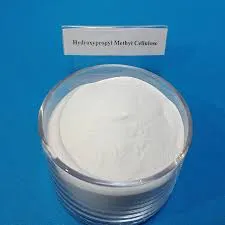
Nov . 22, 2024 10:55 Back to list
hpmc for gypsum plaster
HPMC for Gypsum Plaster Enhancing Performance and Usability
Hydroxypropyl methylcellulose (HPMC) has become an essential additive in modern construction materials, particularly in gypsum plaster formulations. This versatile cellulose ether plays a significant role in improving the performance and usability of gypsum products, making it a popular choice among builders and contractors.
HPMC for Gypsum Plaster Enhancing Performance and Usability
Furthermore, HPMC contributes to the adhesion properties of gypsum plaster. In construction, proper adhesion is crucial for the durability and longevity of plastered surfaces. HPMC enhances the bonding strength between the gypsum plaster and the substrate, reducing the risk of delamination and ensuring the plaster adheres effectively to various surfaces, such as concrete, brick, or plasterboard. This property is particularly advantageous in exterior applications where moisture and temperature fluctuations can cause traditional plaster to fail.
hpmc for gypsum plaster

Another benefit of incorporating HPMC into gypsum plaster is its role as a thickening agent. This characteristic allows manufacturers to control the consistency and viscosity of the plaster mix, preventing it from being too runny or too thick. This adjustability not only enhances the performance of the plaster but also ensures that it can be applied with precision, reducing the likelihood of drips and uneven surfaces.
Moreover, HPMC possesses excellent anti-sagging properties, which is crucial for vertical applications of gypsum plaster. This feature minimizes the risk of the plaster slumping or migrating after application, allowing for a smoother and more uniform finish without requiring constant monitoring during the drying process. As a result, contractors can work more efficiently, leading to time and cost savings.
In addition to these practical benefits, HPMC is non-toxic and environmentally friendly, making it an attractive choice for sustainable building practices. With an increasing emphasis on eco-friendly construction materials, HPMC fits well within this trend, allowing builders to achieve high performance without compromising on health or environmental standards.
In conclusion, HPMC is a key ingredient in gypsum plaster formulations that enhances workability, adhesion, consistency, and overall performance. Its unique properties make it essential for modern construction, ensuring high-quality finishes and durability in plaster applications. As the demand for innovative building materials continues to grow, HPMC will undoubtedly remain a staple in the production of gypsum plasters, contributing to the efficiency and sustainability of construction practices worldwide.
-
Versatile Hpmc Uses in Different Industries
NewsJun.19,2025
-
Redispersible Powder's Role in Enhancing Durability of Construction Products
NewsJun.19,2025
-
Hydroxyethyl Cellulose Applications Driving Green Industrial Processes
NewsJun.19,2025
-
Exploring Different Redispersible Polymer Powder
NewsJun.19,2025
-
Choosing the Right Mortar Bonding Agent
NewsJun.19,2025
-
Applications and Significance of China Hpmc in Modern Industries
NewsJun.19,2025







